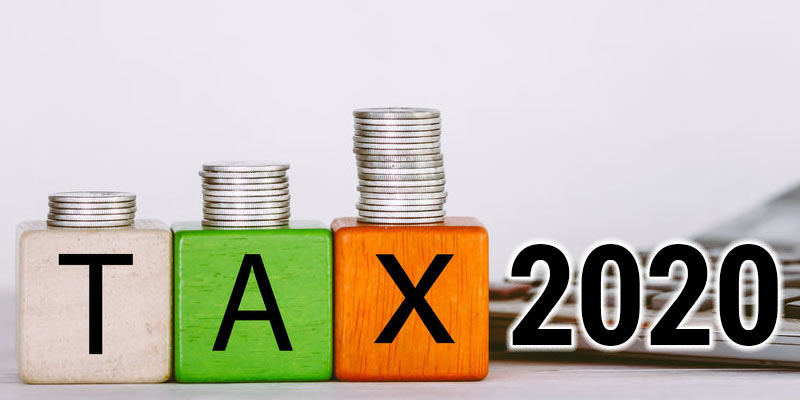The 2020 Union Budget of India has proposed the latest income tax rules. This article describes the new income tax regime 2020 and its effect on Payroll Processing.
Taxpayers can choose any of the two tax options – the old tax regime or the new tax regime.
What will you choose?
Old Tax Regime: Higher tax slab with exemptions and benefits
New Tax Regime: Low tax slab without benefits and exemptions
Not sure? Continue reading the article.
What is the New Income Tax Regime?
According to the Budget 2020, the new income tax regime has introduced low tax rates to reduce overall tax liability on individuals. All tax exemptions are removed, except the National Pension Scheme (NPS).
Revised Income Tax Rates
New income tax rate for individuals with income between Rs 5 to 7.5 lakh is 10% (which was 20% earlier), income between Rs 7.5 to 10 lakh is 15% (reduced from the current tax rate 20%), income between Rs 10 to 12.5 lakh is 20% (which was 30% earlier) and income between Rs 12.5 to 15 lakh is 25% (down from the existing rate 30%). For those who have income above Rs 15 lakh, tax rate would be 30%. Refer to the table below for latest income tax slab rates (2023).
Here is a summarized information on the applicable tax slab under the existing and the new income tax regime and its effect on payroll processing.
New Tax Regime (last updated in April 2023)
| Income slabs (Rs) | Tax Rate (New Regime) |
|---|---|
| Up to 3 lakh | Nil |
| 3-6 lakh | 5% on income which exceeds Rs. 3,00,000 |
| 6-9 lakh | 10% on income more than Rs. 6,00,000 |
| 9-12 lakh | 15% on income more than Rs. 9,00,000 |
| 12-15 lakh | 20% on income more than Rs. 12,00,000 |
| Above 15 lakh | 30% on income more than Rs. 15,00,000 |
The Good Side of the New Income Tax Regime
- Less compliances – Since exemptions and deductions are removed from the new tax regime except NPS, the need to present documents at the time of tax filing is eliminated and the process has become much simpler. Reducing complexity has been one of the key goals of the income tax department which it hopes to achieve through this simplification.
- Low tax rate and higher in-hand income – Since tax rate is reduced and employees do not necessarily have to invest in tax saving instruments, a salaried taxpayer can now have more cash in hand.
- More choices for investments – The new tax regime gives flexibility to customize investment choices. Taxpayers can make investments under various ended schemes with better returns and flexibility to withdraw money when needed.
The Dark Side of New Income Tax Regime
Approximately 70 deductions and exemptions are removed and only few will continue like NPS, 87A, etc. Investments in the following areas will not lead to any exemptions.
- » Section 80C investments (including provident fund, life insurance and many other investment options)
- » House rent allowance (HRA)
- » Housing loan interest (Section 24B)
- » Leave travel allowance (LTA)
- » Medical insurance premium (Section 80DDB)
- » Standard deduction
- » Savings bank interest
- » Education loan interest
How Does Empxtrack Support New Income Tax Regime 2020 and Its Effect on Payroll Processing?
Empxtrack enables the HR or the payroll administrator to adapt to the new tax regime instantly.
- » Choose the preferred income tax regime for employees With easy-to-use functionalities to incorporate dual tax regime options, HR can incorporate the tax changes in just a few minutes.
- » Prompt the user when the income tax regime is changed A warning message appears when the income tax regime is changed.
It helps the HR or payroll admin to switch the tax calculation basis, yet be aware of the change. We introduced this because there is a lack of clarity on whether employees can switch between tax regimes or not, for eg what would happen if an employee switched their job and opted for a different tax regime in their new job. - » Employees have the option to view details of their yearly tax projections (TDS Advice) Employees can decide to pay taxes as per new or old income tax regimes by checking their TDS advice.
With the beginning of the new financial year, each employer must take care of two areas.
- » First, update employees about the changes in the tax laws and new tax regime such that they can make an informed decision for tax calculation.
- » Second, implement a solution that enables HR to map the ever changing income tax laws and calculate taxes accurately.
If you have any queries regarding tax calculation for existing and new tax regimes, drop us a comment in the section below. We would be happy to help you further and share more information on the benefits of the new income tax regime 2020 and its effect on payroll processing, compliance and enabling your employee to maximize their in-hand salary.









This is very informative and useful blog to audience..